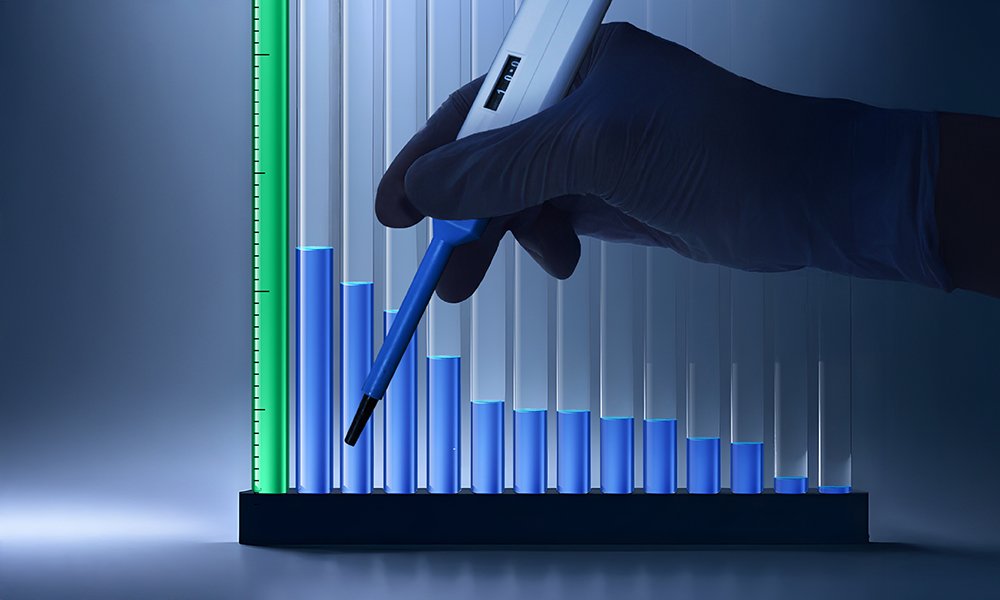Ranked: Which Areas Receive the Most Pharma R&D?
The pharmaceutical industry has made enormous strides in treating—and even curing—a wide range of diseases and conditions. A key driver behind this progress? Billions in funding fueling research and development (R&D) at the cutting edge.
This visualization, created in partnership with Inigo Insurance, highlights which therapeutic areas currently have the largest number of drugs in development, using data from Citeline.
The Rapid Expansion of Drug Development
The global R&D pipeline has surged over the past two decades. In 2001, just 5,995 drugs were in the pipeline. Today, that number has soared to 23,875.
Leading the pack is Pfizer, with 271 drugs in development, followed by Roche (261), Novartis (254), AstraZeneca (241), and Sanofi (233). Pharma giant Eli Lilly ranks seventh with 224 drugs.
Of the nearly 24,000 drugs in the pipeline, about half (12,704) remain in the preclinical stage, while 1,568 are projected to launch in 2025.
Where Is the Most R&D Happening?
The biggest focus area is oncology, which accounts for 9,476 drugs—roughly 40% of the total pipeline. Neurological drugs follow at 3,868, while metabolic drugs, boosted by the weight-loss drug boom, total 3,314.
| Therapeutic Area | Number of drugs |
|---|---|
| Oncology | 9476 |
| Neurology | 3868 |
| Metabolic | 3314 |
| Infectious Disease | 2879 |
| Musculoskeletal | 2157 |
| Immunology | 1469 |
| Dermatology | 1327 |
| Sensory | 1312 |
| Cardiology | 1207 |
| Respiratory | 1172 |
| Genitourinary | 885 |
| Hematology | 811 |
| Hormonal | 273 |
| Parasitology | 109 |
| Rare diseases | 7721 |
Surprisingly, despite being the leading cause of death in the U.S., cardiovascular drugs rank ninth, with just 1,207 drugs in development.
Meanwhile, rare diseases represent another major focus, with 7,721 drugs in progress. Companies like Novartis and Bristol Myers Squibb are leading this charge, dedicating more than half of their pipelines to rare disease treatments—132 drugs (52%) and 115 drugs (50.2%), respectively.
The Future of Pharma Breakthroughs
Pharma R&D doesn’t always align with the biggest health burdens. Instead, it follows the intersection of scientific breakthroughs, patient demand, and market opportunity—a dynamic that will continue to shape the next wave of innovation.

Explore Inigo’s Hub.
-

 Healthcare10 hours ago
Healthcare10 hours agoThe $5.6T Pharmaceutical Industry in One Chart
Pharma giants don’t just make medicine—they shape the future of healthcare. Who are the world’s major players?
-

 Crime3 weeks ago
Crime3 weeks ago6 Fraud Trends Reshaping Risk in 2025
The fraud and financial crime landscapes are evolving rapidly. What are the key threats shaping risk in 2025?
-

 Cryptocurrency3 weeks ago
Cryptocurrency3 weeks agoRanked: The 10 Biggest Digital Heists
Some of the largest digital heists didn’t rely on brute-force hacking, they exploited the weakest link in security: human trust.
-

 Crime3 weeks ago
Crime3 weeks agoThe Most Costly Financial Crimes in 2024
As cybersecurity threats escalate, which financial crimes are causing the most harm? The FBI has the data.
-

 Crime4 weeks ago
Crime4 weeks agoMapped: U.S. Financial Crime Activity by State
Suspicious activity has been rising in the U.S., but is it spread evenly throughout all 50 states? Certainly not.
-

 Crime4 weeks ago
Crime4 weeks agoRanked: America’s Most Common Financial Crimes
As technology and AI become more widespread, fraud and other suspicious activity are rising across America. Which types are the most common?
-

 Economy4 weeks ago
Economy4 weeks agoTracking the $3.1 Trillion Financial Crime Pandemic
From money laundering to fraud, financial crime acts as a drain on the economy, totaling an incredible $3.1 trillion.
-

 Politics2 months ago
Politics2 months agoWhich Types of Government Rule the World?
Over half the global population is ruled by non-centrist types of government, including autocracies and left or right wing parties.
-

 Politics2 months ago
Politics2 months agoBreaking Down the $524 Billion Investment Needed to Rebuild Ukraine
Ukraine will require an estimated $524B over the next decade to recover from the Russia-Ukraine war. Which sectors have been most impacted?
-

 Politics2 months ago
Politics2 months agoAre Tariffs Causing U.S. Inflation Fears?
Amid tariff increases, consumers’ expectations for U.S. inflation in the next five years have reached their highest level since March 1991.
-

 Politics3 months ago
Politics3 months agoRanked: Executive Orders by President in the First 100 Days
In his first 100 days, President Trump has issued far more executive orders than any other president in history.
















